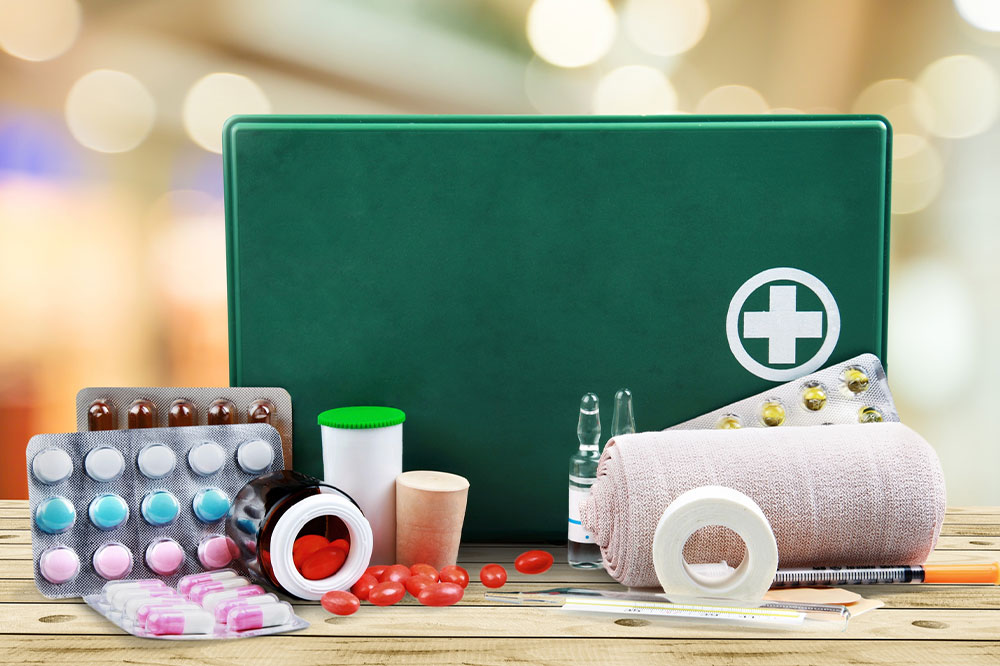
A comprehensive guide to a functional first-aid kit
Accidents and injuries can occur at any time and place, so it is essential to have a well-stocked first-aid kit on hand. The presence of a first-aid kit can provide immediate assistance to anyone injured or ill, preventing further harm and increasing the likelihood of positive outcomes. A first-aid kit is a collection of supplies and equipment that can be used to provide emergency care and assistance until professional help arrives.
Types of first-aid kits
There are various types of first-aid kits, and the contents of each of these kits vary depending on their intended use.
- First-aid kit for home
It is necessary for every household to have access to a first-aid kit. The kit should contain essential items useful in treating minor injuries, such as bruises, cuts, and burns. It should also have a first aid manual to provide guidance on how to use the items in the kit effectively. - First-aid kit for travel
If you or someone you know is planning on taking a trip, it is essential to have a travel first-aid kit handy. The kit needs to contain basic supplies like antiseptic wipes, bandages, and pain relievers. It’s also necessary to pack any treatment essentials you or your family members are used to or dependent on. This includes allergy treatments, prescriptions, and other natural options that can come in handy. - First-aid kit for workplace
Accidents can happen anywhere. The workplace is yet another venue where keeping a first-aid kit handy is important. There could be numerous scenarios where one would require the assistance of burn ointments, tend to cuts and bruises, or assist with a sore throat, runny nose, and rising body temperature. The kit should also contain items that would help with allergies, eye injuries, and sprains. - First-aid kit for sports
A sports first-aid kit is of utmost importance for athletes and sports centers. The kit needs to be equipped with supplies that can help treat common sports injuries, including but not limited to strains, sprains, and bruises. The kit should also contain allergy treatment options, athletic tape, cold/ice packs, scissors, and bandages, among others. Asthma inhalers are must-have devices in first-aid kits.
Things that need to be included in a first-aid kit
The contents of a first-aid kit vary based on its intended use. However, there are some basic requirements that need to be included in every first aid kit:
- Bandages
Minor cuts and abrasions can be treated with adhesive bandages and plasters. These are available in various shapes and sizes, so ensure you have them in abundance. - Sterile gauze rolls and pads
Sterile gauze comes in handy when you want to dress and cover wounds. Make sure it is stocked to help deal with small and bigger wounds. - Antiseptic solutions and wipes
Antiseptics help clean wounds and prevent infections. Disinfectant wipes or hydrogen peroxide swabs are equally effective but may be abrasive on the skin. - Scissors and tweezers
Tweezers are of assistance when you need to remove a foreign object from the wound, while the scissors can help cut gauze rolls and pads. - Disposable gloves
Disposable gloves help prevent the spread of bacteria and other germs. - Pain relievers
Pain relieving sprays, ointments, and other options can help with sprains and muscle pulls. Ensure you have the dosage instructions and expiry dates available with these products. - Instant cold packs
Cold packs help bring down the swelling and pain caused by injuries. - Emergency blanket
The emergency blanket can keep the person warm in cold weather or shock. - First aid manual
Another necessary inclusion in a first-aid kit is a manual. It helps understand the correct usage of the items in the kit.
First-aid courses are designed for people to learn the basic skills necessary to provide emergency care. These typically cover topics like assessing an emergency situation, providing CPR, controlling bleeding, treating shock, and using a defibrillator. There are stages of courses like basic first aid, CPR and AED training, wilderness first aid, pediatric first aid, and first aid for mental health. Generally, first-aid courses are taught by certified instructors. Organizations such as American Red Cross, American Heart Association, and other local community organizations provide first aid training.




